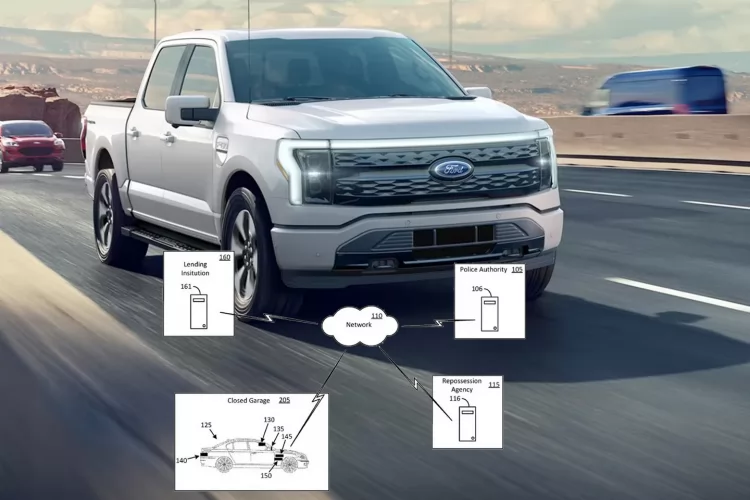Many car owners underestimate the ongoing expenses associated with vehicle ownership. Your budget should account for routine maintenance, unexpected repairs, and the inevitable decline in your vehicle’s value, or depreciation. Understanding these hidden costs can help you make more informed decisions about your car purchase and ensure that you are prepared for the financial responsibilities that come with owning a vehicle. This guide will provide you with important insights to help you navigate the complexities of car ownership.
Key Takeaways:
- Maintenance Expenses: Regular maintenance is imperative for keeping your vehicle running efficiently and can lead to significant long-term savings if performed on schedule.
- Repair Costs: Unplanned repairs can arise unexpectedly and might strain your budget; it’s advisable to set aside a portion of your budget specifically for these potential expenses.
- Depreciation Impact: A car’s value decreases over time, and understanding this depreciation will help you make informed decisions regarding ownership and resale value.
Understanding Car Maintenance
Your vehicle requires continuous care to ensure it remains reliable and performs well over time. While the initial purchase price of a car is often the focus for buyers, the ongoing costs related to maintenance are just as important to consider. Whether you choose to handle some tasks yourself or rely on professionals, being aware of these expenses will help you budget accordingly and make informed decisions about your automotive ownership.
Regular Maintenance Costs
An effective maintenance schedule includes various routine services that keep your car in optimal condition. These can include oil changes, tire rotations, brake inspections, and fluid checks. While these costs may not seem overwhelming at first glance, they can add up significantly over the lifespan of your vehicle. On average, you can expect to spend hundreds, if not thousands, of dollars annually on these regular maintenance tasks. Knowing these expenses can help you plan better and avoid unexpected financial burdens.
Importance of Preventative Care
After developing a solid understanding of regular maintenance costs, you should consider the significance of preventative care. Preventative care involves not just addressing current issues but taking proactive measures to avoid problems in the future. Simple steps like regularly checking tire pressure or changing air filters can save you from costly repairs down the line. When you prioritize preventative maintenance, you’re not only extending the lifespan of your vehicle but also enhancing your safety on the road.
A comprehensive preventative maintenance plan will help keep your vehicle running smoothly and may even improve fuel efficiency. By staying ahead of minor issues, you can avoid potential breakdowns that could lead to emergency repairs, which often come at a premium. This proactive approach allows you to take control of your ownership experience while reducing the stress of unexpected costs and complications.
Common Maintenance Expenses
Common maintenance expenses are the everyday tasks you need to budget for as a car owner. These expenses can vary depending on your vehicle’s make, model, and age, but you should expect to encounter items like oil changes, new tires, brake pad replacements, and battery checks. The frequency of these services can range from every few months to annually, depending on driving habits and manufacturer recommendations.
Due to the wear and tear that vehicles experience over time, these maintenance costs will continue to be a part of your car ownership journey. Being aware of these common expenses enables you to plan your finances accordingly and avoid surprises. Allocating a budget for maintenance will provide you peace of mind knowing that you can address these needs as they arise.
The Financial Impact of Repairs
Now that you are aware of the various costs associated with car ownership, it’s necessary to consider how repairs can impact your wallet. Repairs can fall into two categories: expected and unexpected. This distinction can greatly influence your overall budgeting for car ownership. Expected repairs are those that you can anticipate based on your vehicle’s age, mileage, and maintenance schedule. For example, replacing brake pads or tires at regular intervals is something most car owners plan for. However, unexpected repairs can significantly strain your finances. These often arise from unforeseen mechanical failures or accidents and can be financially devastating if you’re not prepared. It is beneficial to set aside a maintenance fund to cover these surprise expenses, so your finances aren’t thrown into disarray when a costly issue arises.
Expected vs. Unexpected Repairs
Repairs associated with your vehicle can vary greatly in cost and frequency. As you progress through car ownership, you will likely develop a good sense of what to expect in terms of repairs. This knowledge can help you make informed decisions about vehicle maintenance and budgeting. However, it’s necessary to keep in mind that even the best-kept vehicles can encounter problems at the most inconvenient times. Thus, anticipating both expected and unexpected repairs is vital for sound financial planning.
Warranty and Extended Coverage Considerations
On the other hand, understanding your warranty and any extended coverage options can provide significant peace of mind when it comes to repairs. Many new cars come with a manufacturer’s warranty that covers a range of components for a specific time or mileage. This can help shield you from repair costs, especially early in your ownership journey. If you purchased an extended warranty, it could further alleviate your financial burden by covering costs for certain repairs beyond the original warranty period. However, it’s necessary to read the fine print and know what is covered to avoid any unwanted surprises.
Impact of not having adequate coverage can leave you exposed to substantial repair bills. Understanding the nuances of your warranty and any further options can help you make informed decisions about extra protection. In many cases, you’ll find that investing in extended coverage can save you from steep out-of-pocket expenses should a major failure occur.
Do-It-Yourself vs. Professional Repairs
Below, you’ll find that choosing between do-it-yourself (DIY) repairs and hiring a professional can also impact your financial situation. DIY repairs can save you a significant amount of money, especially for simple tasks like changing oil or installing new wiper blades. However, this approach requires skill, time, and the proper tools, and it can lead to costly mistakes if you are not confident in your abilities. On the other hand, hiring a professional may seem more expensive upfront, but it often leads to a job well done, reducing the chances of repeat repairs for the same issue.
Coverage of DIY versus professional repairs really depends on your comfort level and available resources. If you have the skills, time, and tools, tackling repairs on your own can save you money in the long run. However, if you’re uncertain about your abilities, it’s often wise to let a professional handle repairs. This ensures that the work is done correctly and can help prevent future problems, ultimately saving you money on larger repairs down the line.
The Depreciation Dilemma
After purchasing a car, many owners are often surprised to discover how quickly their vehicle’s value decreases. This phenomenon, known as depreciation, impacts not only your finances but also your overall ownership experience. Understanding how depreciation works and what factors influence it can empower you to make informed decisions and potentially save money in the long run.
Understanding Depreciation in Car Value
Value is a critical aspect of car ownership that often gets overlooked. When you drive your new car off the lot, it begins to lose value immediately. On average, a new vehicle can lose around 20% to 30% of its original value within the first year alone, and this decline continues over the years. As a car owner, it is vital to grasp this aspect because it affects not only the resale value when you’re ready to sell but also your overall investment in the vehicle.
Factors Influencing Depreciation Rates
Depreciation plays a significant role in the financial equation of car ownership. Various factors contribute to how quickly your vehicle loses its value over time. Key elements that influence depreciation rates include:
- Make and model: Some brands and models hold their value better than others.
- Mileage: Higher mileage typically accelerates depreciation.
- Condition: A well-maintained car depreciates slower than one that has been poorly looked after.
- Market demand: Popular models tend to depreciate slower due to higher demand.
- Age: Naturally, older cars have lower resale values.
The combination of these factors can significantly influence your car’s resale value over time. For instance, while choosing a popular brand may provide better resale value, neglecting regular maintenance can lead to faster depreciation regardless of the manufacturer’s reputation.
How to Mitigate Depreciation Losses
Across the lifespan of your vehicle, there are strategic moves you can make to mitigate depreciation losses. First, consider purchasing a used vehicle instead of a new one, as newer models tend to experience the most significant depreciation in the first few years. Additionally, keeping your car in excellent condition through regular maintenance and careful driving can preserve its value over time.
It is also wise to research buying trends to identify which cars depreciate slower. By selecting a vehicle that is known for its durability and ease of maintenance, you not only safeguard your investment but potentially enjoy better resale values down the line. The right vehicle choice blended with consistent upkeep is key to minimizing depreciation losses throughout your ownership period.
Additional Hidden Costs of Car Ownership
Not all costs related to car ownership are immediately apparent, and it’s important to be aware of the various hidden expenses that can impact your budget. One significant category of hidden costs is related to insurance premiums and the different coverage types that might be required for your vehicle. As you shop for car insurance, you’ll find that costs can vary greatly based on factors such as your vehicle’s make and model, your driving history, and even your location.
Insurance Premiums and Coverage Types
Behind the wheel of your vehicle, you’re benefiting from liability coverage, which is often legally mandated and protects you from potential damages you may cause to others. However, the breadth of coverage options can also lead you to spend more than necessary if you don’t carefully assess your needs.
| Coverage Type | Typical Cost Range |
| Liability Coverage | $400 – $1,500/year |
| Collision Coverage | $300 – $1,200/year |
| Comprehensive Coverage | $100 – $1,000/year |
| Uninsured Motorist Coverage | $200 – $500/year |
| Personal Injury Protection | $300 – $600/year |
This range illustrates just how much of a financial impact your insurance choices can have. Evaluating your options carefully will help you avoid overspending on unnecessary coverage.
Fuel Expenses and Efficiency Considerations
With the rising cost of gas, fuel expenses are another hidden cost of vehicle ownership that can quickly add up. Your car’s fuel efficiency plays a crucial role in determining how much you’ll spend at the pump. Understanding your vehicle’s miles per gallon (MPG) can provide an insight into your potential fuel expenses and help you make informed decisions about your next vehicle purchase.
Plus, opting for a car with better fuel efficiency can lead to substantial savings over time, reducing your overall cost of ownership. If you find yourself commuting regularly or taking long trips, these savings become even more impactful on your finances.
Registration, Taxes, and Other Fees
Hidden taxes and registration fees may also catch you off guard when budgeting for your vehicle. Every year, you may need to pay for items such as vehicle registration, property taxes, and potential emissions fees depending on local regulations. Understanding these requirements in advance plays a key role in managing your overall vehicle costs.
Ownership costs can vary greatly from state to state, affecting your bottom line and potentially changing how much car you can afford. Keeping a close eye on the fees involved can help you avoid unnecessary financial stress.
To wrap up
To wrap up, understanding the hidden costs of car ownership is vital for making informed decisions about your vehicle. As you consider the long-term financial implications, it’s necessary to account for ongoing maintenance, potential repairs, and the depreciation you will experience over time. Prioritizing regular maintenance can help you avoid costly repairs down the road, while being aware of how depreciation affects your car’s resale value allows you to manage your investment more effectively. By taking these factors into consideration, you can better prepare yourself for the financial responsibilities of owning a car.
Additionally, budgeting not just for the initial purchase price but also for fuel, insurance, taxes, and unexpected expenses can give you a more comprehensive view of your total cost of ownership. By being proactive and informed, you can navigate the complexities of car ownership with confidence and ensure that your vehicle remains a reliable asset rather than a financial burden. Your understanding of these hidden costs empowers you to make better choices that support your overall financial health and mobility needs.
Q: What are the most common maintenance costs associated with car ownership?
A: Maintenance costs can vary significantly depending on the make and model of the vehicle, but some common expenses include oil changes, tire rotations, brake pad replacements, and fluid checks/changes. On average, car owners can expect to spend around $1,000 to $1,500 annually on maintenance. Regular upkeep is important to ensure the vehicle operates efficiently and to avoid larger repair bills down the road.
Q: How does depreciation affect the overall cost of car ownership?
A: Depreciation is the decline in a vehicle’s value over time and can significantly impact the total cost of ownership. On average, a new car loses about 20% to 30% of its value within the first year and continues to depreciate by about 15% each year thereafter. This loss in value affects resale potential and can lead to a substantial financial loss if the owner decides to sell the car later. Understanding depreciation helps owners make informed choices regarding purchases and leasing options.
Q: What should I consider regarding unexpected repairs when budgeting for car ownership?
A: Unexpected repairs are a common part of car ownership and should be factored into budgeting. It’s recommended to set aside about $50 to $100 per month to cover unexpected repair costs. This fund can help manage larger expenses like transmission issues or electrical system failures. Additionally, the age and mileage of the vehicle are important considerations, as older cars typically require more frequent and varied repairs. Having a reliable mechanic or service center can also aid in predicting and planning for potential repairs.



